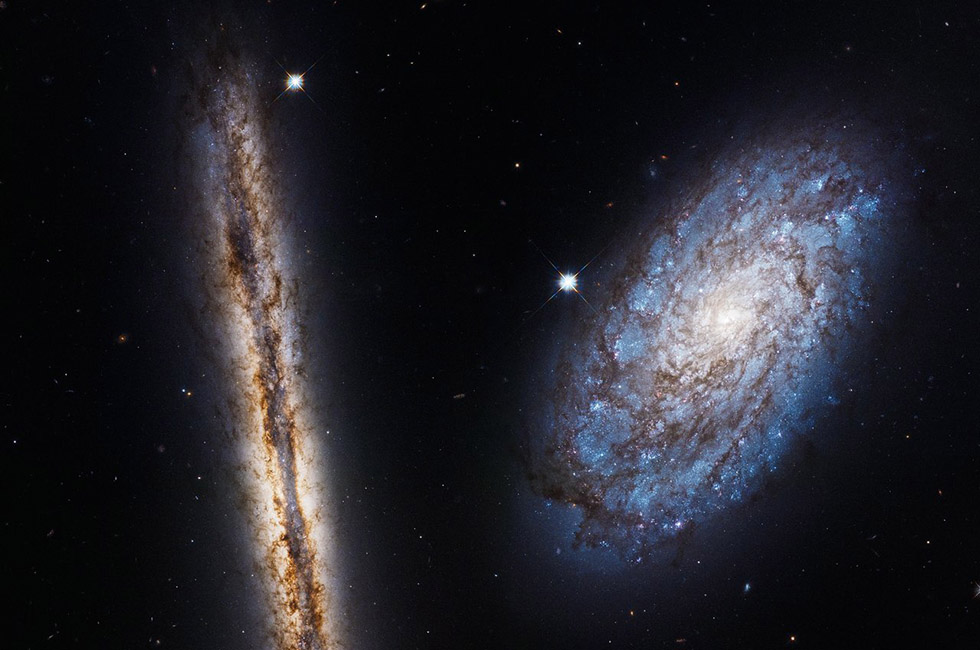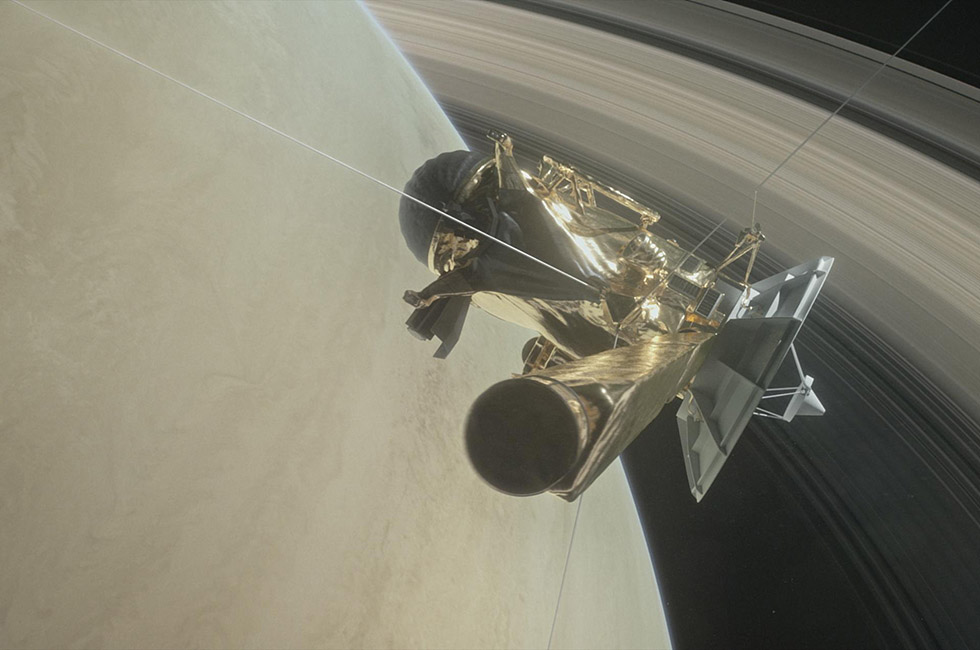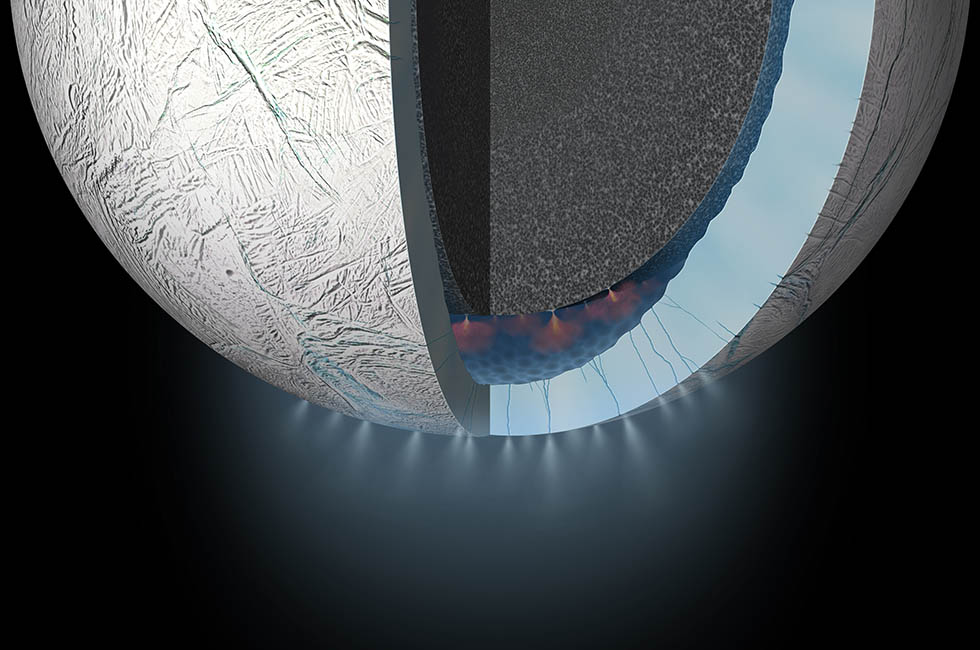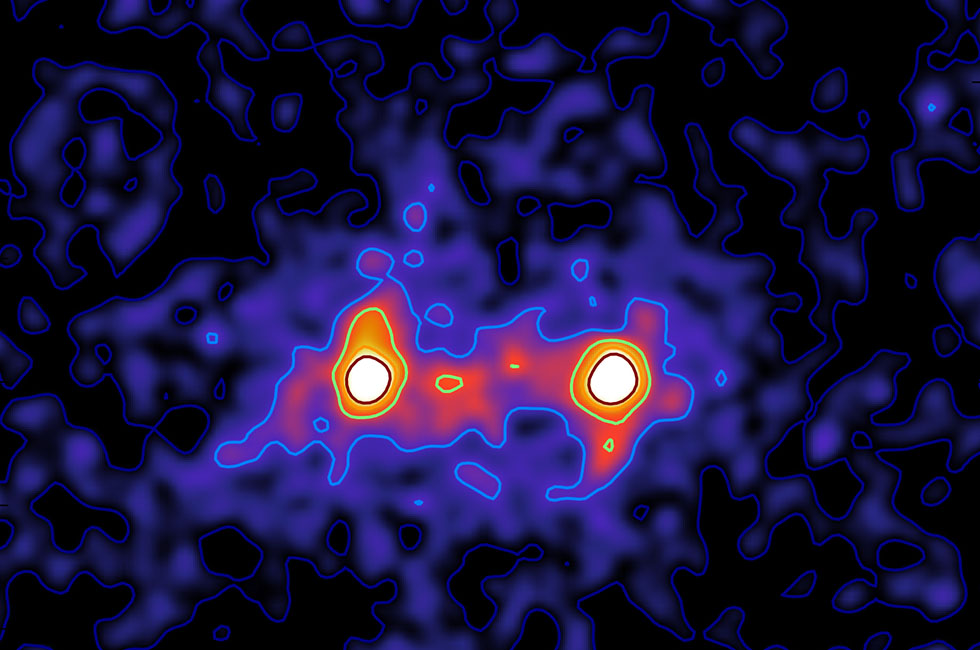April's Stunning Space Pictures
This month's featured images include a commemorative portrait of the spacecraft Cassini and a composite image of dark matter.
Image
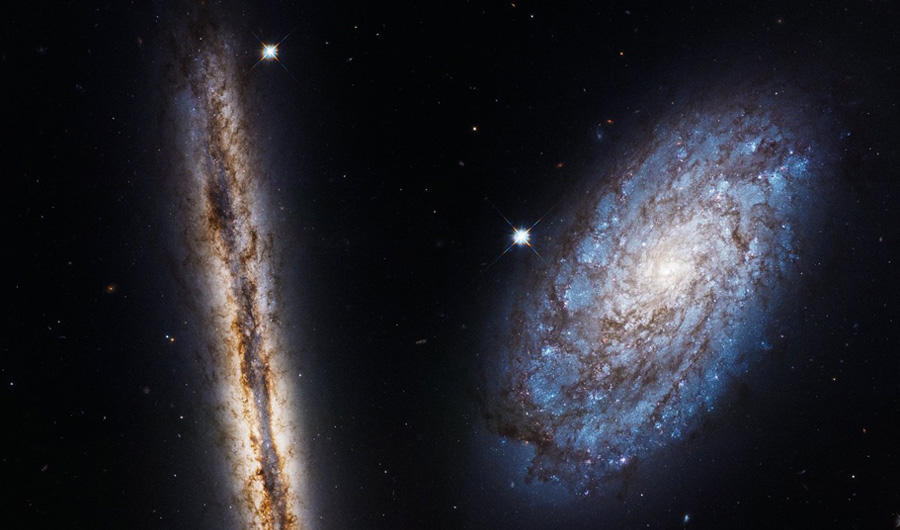
NASA
(Inside Science) -- Over the past month, astronomers have celebrated new anniversaries, final missions, and intriguing observations. In April’s selection of astronomy images, we travel the solar system through the lenses of the Cassini and Dawn spacecraft. Then, we peer at far-away stars for hints of dark matter. Please enjoy our slideshow below.
Filed under

